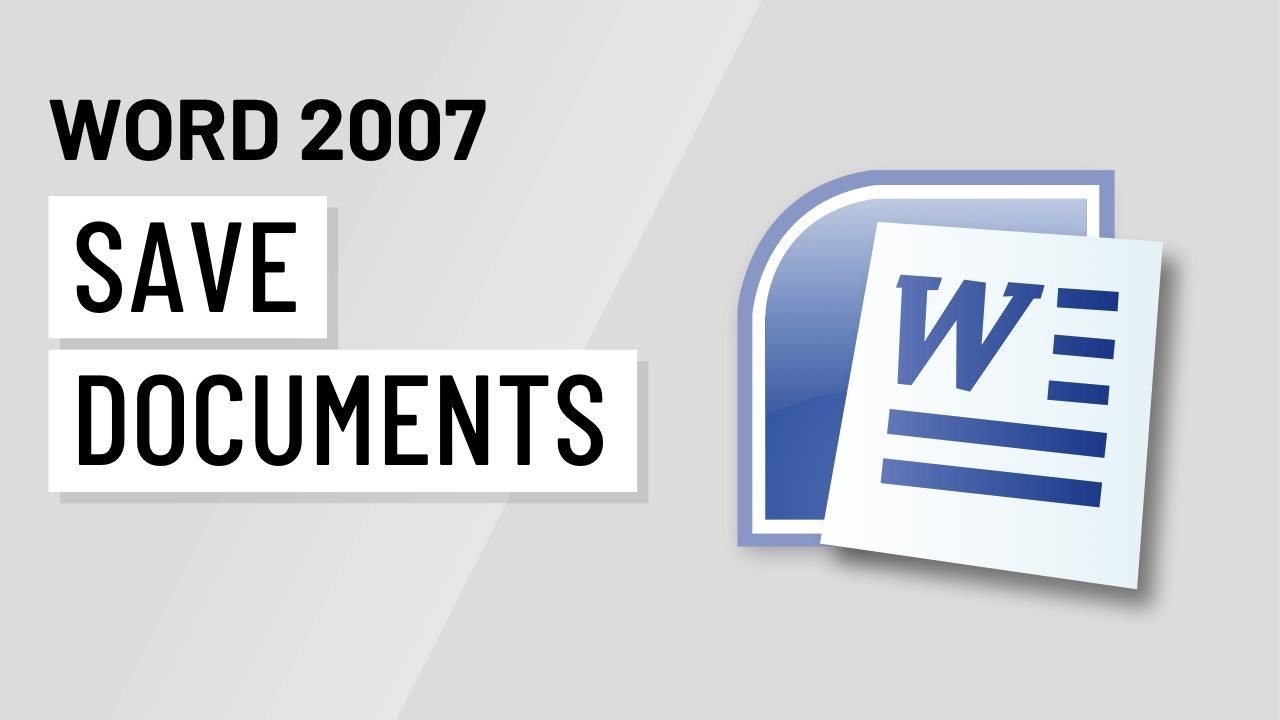
Introduction:
In the landscape of document creation and word processing, Microsoft Word 2007 stands as a pioneering tool that introduced a revamped user interface and enhanced functionalities. One of the fundamental aspects of using Word 2007 is understanding the intricacies of saving documents. This comprehensive guide will delve into the nuances of saving documents in Microsoft Word 2007, providing users with the knowledge and skills needed to manage, secure, and share their creations effectively.
I. The Essence of Saving:
- Preserving Your Work:
- Saving documents is akin to safeguarding your work. It ensures that your changes are stored and can be accessed in subsequent sessions.
- Version Control:
- Regular saving allows for version control, enabling users to revisit or revert to previous iterations of a document.
II. Accessing Save Options:
- Save Button:
- The most direct way to save a document is to use the Save button on the Quick Access Toolbar. Clicking it saves changes to the existing file.
- File Menu:
- Navigate to the File menu, where the Save and Save As options are accessible. This menu provides additional saving and exporting functionalities.
III. Saving a New Document:
- Creating a New Document:
- When initiating a new document, use the Save or Save As option to establish its location, filename, and format.
- Selecting Save Location:
- Choose a save location, such as your computer or cloud storage. Specify a filename that reflects the document’s content.
- File Formats:
- Microsoft Word 2007 defaults to the .docx format. This XML-based format offers enhanced features but may not be compatible with earlier Word versions.
IV. AutoSave Feature:
- Automatic Saving:
- Word 2007 introduced the AutoSave feature, periodically saving changes in the background to mitigate data loss in case of unexpected interruptions.
- Configuring AutoSave:
- Adjust AutoSave settings under the Word Options menu, customizing the frequency of automatic saves.
V. Save As:
- Creating Variations:
- The Save As option allows users to create variations of a document. This is beneficial when experimenting with different versions or formats.
- Choosing File Formats:
- Save As permits the selection of alternative file formats, accommodating compatibility with various software applications.
VI. Save to PDF:
- Exporting to PDF:
- Word 2007 facilitates exporting documents directly to PDF format, enhancing compatibility for sharing and printing.
- PDF Options:
- Explore PDF options during the Save As process, tailoring settings for optimal document presentation.
VII. Overwriting and Confirmations:
- Overwriting Existing Files:
- When saving changes to an existing file, Word 2007 prompts users to confirm the action, preventing unintentional overwrites.
- Confirmation Dialogs:
- Understand and respond to confirmation dialogs, ensuring deliberate saving actions and minimizing the risk of accidental data loss.
VIII. Save and Send:
- Emailing Documents:
- The Save and Send option in Word 2007 streamlines the process of emailing documents directly from the application.
- Online Collaboration:
- Utilize Save and Send features for online collaboration, sharing documents with colleagues or collaborators effortlessly.
IX. Document Properties:
- Metadata and Details:
- Access document properties to view and modify metadata, including details like author name, title, and keywords.
- Advanced Properties:
- Explore advanced properties to gain deeper insights into document statistics and attributes.
X. Cloud Saving:
- Cloud Integration:
- Word 2007 supports cloud saving, allowing users to store documents on platforms like OneDrive for seamless accessibility across devices.
- Security Considerations:
- Exercise caution when saving sensitive documents to the cloud. Implement security measures to protect confidential information.
XI. Recovering Unsaved Documents:
- Document Recovery Feature:
- Word 2007 includes a Document Recovery feature to retrieve unsaved or auto-saved versions in the event of an application crash.
- Accessing Recovered Documents:
- Upon reopening Word 2007 after a crash, the application prompts users to access recovered documents for review and potential restoration.
XII. Mastering Save Etiquette:
- Frequent Saving:
- Cultivate the habit of saving frequently to minimize the risk of data loss and ensure continuous progress in your work.
- Organized File Management:
- Maintain an organized file management system, including logical folder structures and clear filenames, for efficient document retrieval.
XIII. Document Backups:
- Backup Strategies:
- Implement robust backup strategies, creating duplicate copies of critical documents to safeguard against unforeseen events.
- External Storage:
- Consider external storage options, such as USB drives or external hard disks, for additional layers of document backup.
XIV. Conclusion:
- Empowering Your Workflow:
- Mastering the art of saving documents in Microsoft Word 2007 empowers users to navigate the world of document creation with confidence.
- Efficiency and Security:
- Efficient saving practices not only enhance workflow efficiency but also contribute to the security and integrity of your valuable documents.
As you navigate the intricate landscape of saving documents in Word 2007, you embark on a journey of document management, security, and collaboration. By understanding the diverse saving options, leveraging advanced features, and incorporating best practices into your workflow, you elevate your proficiency in utilizing Microsoft Word 2007 to its fullest potential.